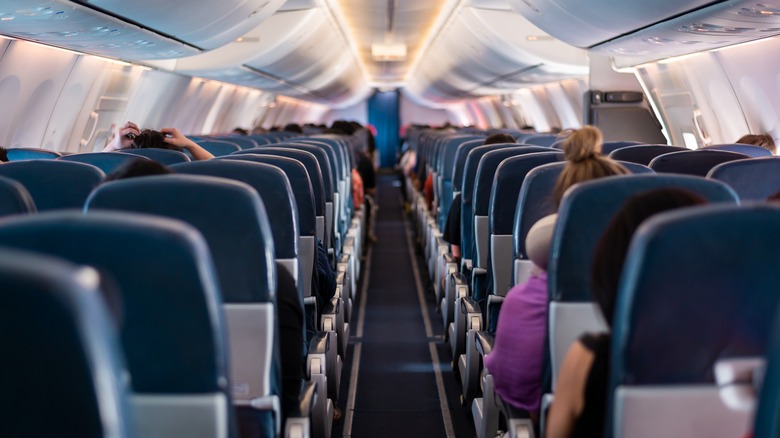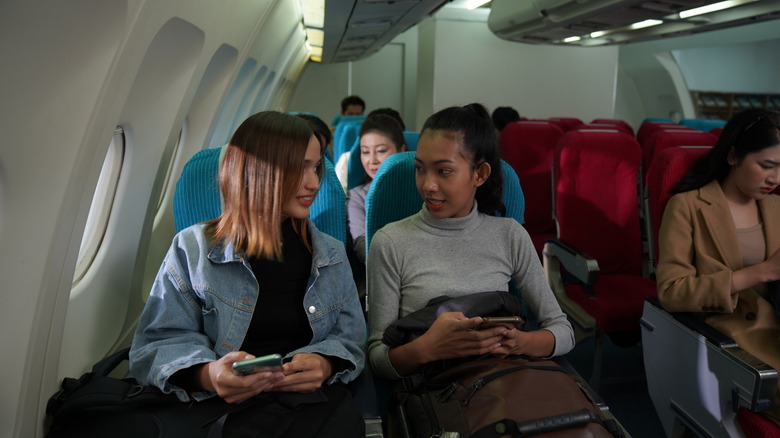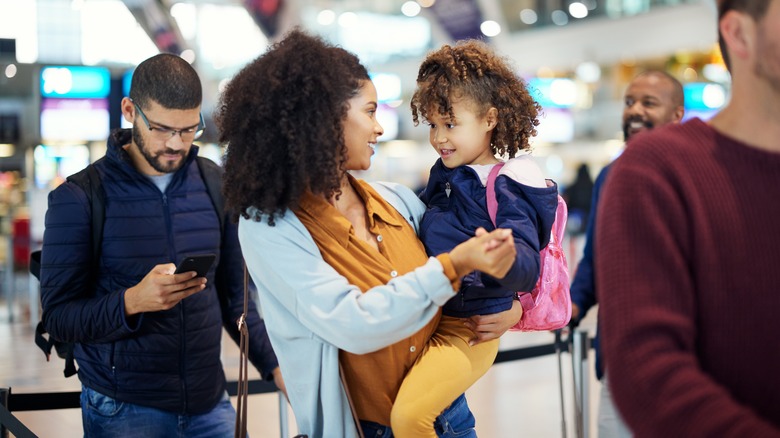The Unexpected Reason Why Planes Never Board From Back To Front
Picture this: You're sitting at your gate, waiting for the airline staff to call your group, and it quickly starts to feel like pretty much everyone else gets to board the plane before you do. And as other travelers who are sitting near the front of the plane shuffle past you with their bags and carry-ons, you start to wonder: Why don't airlines just load passengers from back to front? After all, it seems like the most logical approach ... right? As it turns out — it's not.
Truth is, airlines have studied countless boarding methods over the years — it's part of their job, after all — and they've ultimately landed on the conclusion that back-to-front boarding only creates more problems than it solves. How so? Well, from unnecessary over-crowding to uneven weight distribution and losing out the ability to reward premium passengers, using the back-to-front method only complicates an already complex process that doesn't need any more messing around with.
Logistically, boarding back to front doesn't work
Put simply, one of the key issues with back-to-front boarding boils down to basic physics. Aircraft engines are located at the back of the plane — which already makes that section significantly heavier. That said, filling the back with passengers first — and adding all that extra weight at once — could potentially cause stability issues or damage to the plane. And let's face it, no one wants that right before taking flight. By boarding from front to back, airlines can work to maintain a better balance throughout the entire loading process.
Along with weight concerns, another practical reason why back-to-front boarding doesn't work is the sheer logistics of passenger movement. How so? Well, when back-of-the-plane passengers bunch up together at once after boarding, all they actually do is crowd the aisles and block each other — ultimately creating more congestion in the aisles, slowing the entire process down, and driving the airplane crew up the wall. Throw in the fact that airlines want to make sure they prioritize their premium passengers — from travelers who have paid the high price for priority boarding to first-class flyers who are most likely sitting near the front — and you've got a recipe for boarding chaos.
What's the best method according to science?
Back in 2008, Dr. Jason Steffen — an astrophysicist and professor at the University of Nevada — came up with a mathematically-tested solution for everyone's plane-boarding woes. His method — now referred to as the Steffen Method — basically suggests that the fastest way to board a plane is to load window seat passengers first, followed by middle seats, and then aisle seats — all while alternating rows. In practice, this would mean that airlines would start by boarding passengers in even-numbered window seats, followed by odd-numbered window seats, then passengers in even-numbered middle seats, and so on.
Per Dr. Steffen's research, spreading passengers throughout the cabin — rather than clustering them together in one big group — allows everyone to stow their luggage and take their seats without creating any bottlenecks. However, while this method proved to be a lot faster than conventional boarding in computer simulations, there's a major catch: It doesn't account for real-world variables — like the fact that families traveling with kids need to board and sit together, or the likely probability that living, breathing humans (not machines) are bound to make mistakes.


